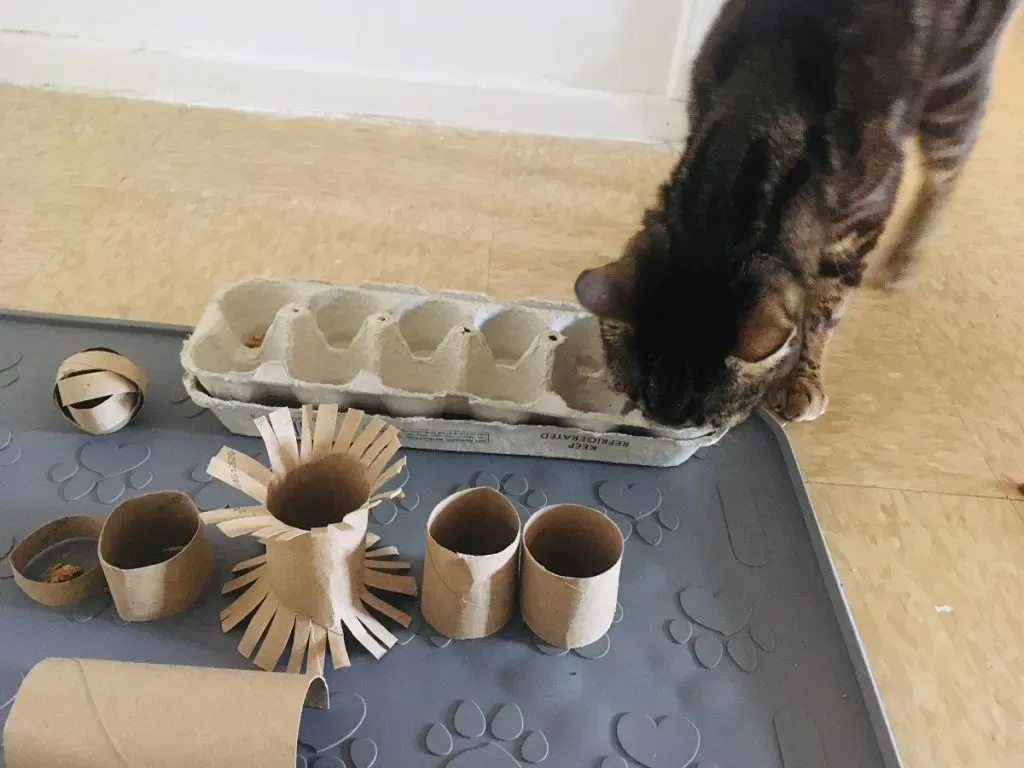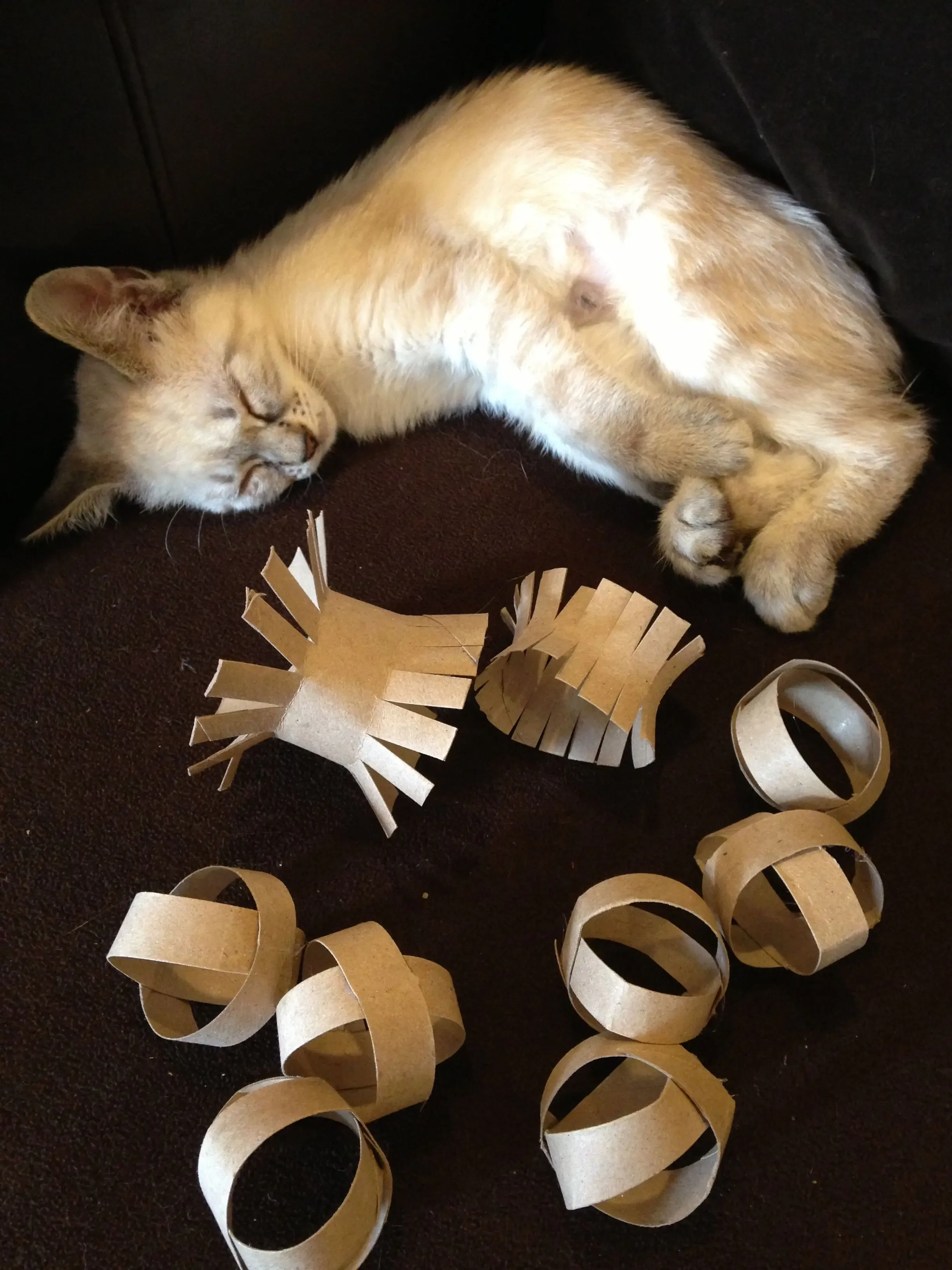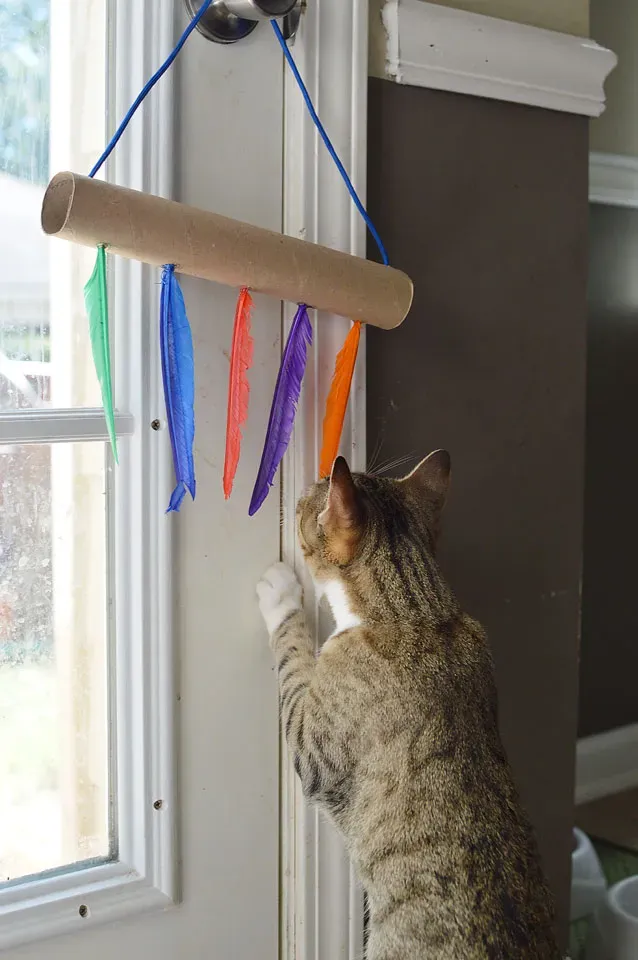Table of Contents
Let's be honest, cats can be picky. You buy them that fancy feathered wand or the electronic mouse, and half the time they'd rather play with the box it came in. Or maybe they just yawn and walk away. Sound familiar? Keeping our feline overlords entertained without blowing the budget feels like a constant quest.
Why Your Cat Needs DIY Toys (and Why Cardboard Works)

Why Your Cat Needs DIY Toys (and Why Cardboard Works)
Look, your cat isn't just some furry couch decoration, despite what they might tell you with their 16 hours of daily napping. They're tiny predators, wired for hunting, stalking, and pouncing. If they don't get a chance to channel that energy, you end up with shredded furniture, midnight zoomies that sound like a herd of elephants, or just a plain bored, potentially grumpy feline. That's where toys come in – they're not just for fun; they're essential for mental stimulation and physical exercise. And when it comes to materials cats inexplicably adore, cardboard ranks surprisingly high. Think about it: it's got texture for scratching, it holds scents, and maybe, just maybe, it reminds them on a primal level of trees, those tall things outdoor cats love to climb and mark. It’s cheap, readily available, and frankly, cats seem to think it's the best thing since sliced salmon.
13 Clever DIY Cat Toys With Toilet Paper Rolls You Can Make Today

13 Clever DIY Cat Toys With Toilet Paper Rolls You Can Make Today
so you're convinced that cardboard tubes aren't just landfill fodder anymore. Great. Now let's get down to the fun part: actually making stuff your cat might, just *might*, play with for more than five seconds. Forget complicated instructions or needing a workshop full of tools. We're talking scissors, maybe some glue or tape, and stuff you probably already have lying around. The beauty of **diy cat toys with toilet paper rolls** is their sheer simplicity and the endless variations you can create. From simple things to bat around to slightly more complex puzzles that make them work for treats, there's a whole world of cheap entertainment waiting in that cardboard cylinder. Think of this as your quick-start guide to becoming your cat's favorite (and cheapest) toy manufacturer.
Here are 13 ways to transform a humble toilet paper roll:
- The Basic Battler: Just the tube itself. Simple, but effective for batting across the floor.
- The Ring Toss: Cut the tube into several rings. Cats love batting these lightweight circles.
- The Treat Roller: Poke holes in the tube, stuff with treats, and seal the ends. They roll it to get snacks out.
- The Crinkle Stick: Stuff the tube with crinkly paper (like from packaging).
- The Feather Wand Attachment: Secure feathers or string to one end of a tube.
- The Catnip Bomb: Stuff the tube with catnip and maybe some cotton balls, seal the ends.
- The Puzzle Feeder: Cut different sized holes along the tube and place kibble inside.
- The Shredded End Teaser: Cut slits into the ends of the tube to create fringe.
- The Ball Inside: Place a small ball (like a ping pong ball) inside the tube and flatten the ends slightly.
- The Stackable Fun: Cut several tubes to different lengths and arrange them for batting practice.
- The Hanging Spinner: Thread string through the tube and hang it from a doorway or cat tree.
- The Foraging Box Filler: Cut several tubes into rings and place them in a box for a digging game.
- The Simple Kicker: Just leave the tube as is for kicking and bunny-kicking.
The Upsides and Downsides of DIY Cat Toys from Toilet Paper Rolls

The Upsides and Downsides of DIY Cat Toys from Toilet Paper Rolls
Why Bother? The Perks Are Real (and Cheap)
Let's cut to the chase: making **diy cat toys with toilet paper rolls** saves you cash. A pack of fancy catnip mice can set you back ten bucks, only for one to disappear under the fridge and the other to be summarily ignored after two minutes. Toilet paper rolls? Free. You were just going to toss them anyway. This cost factor means you can churn out new toys constantly, keeping things fresh for your easily bored companion without feeling guilty about wasted money.
Beyond the price tag, you control the materials. No weird dyes, questionable plastics, or stuffing that could be dubious. It's just cardboard. You know exactly what your cat is batting, licking, and potentially trying to chew on. Plus, there's a certain smug satisfaction in watching your cat go absolutely bonkers for something you literally pulled out of the recycling bin. It feels like you've hacked the system, providing enrichment using waste.
More Wins for the Cardboard Tube Crew
These simple creations offer great mental stimulation. The treat dispensers, for example, aren't just things to hit; they require problem-solving. Your cat has to figure out how to roll, bat, or shake the tube just right to get the kibble or treat out. This kind of challenge is way more engaging than a static toy and helps prevent boredom, which is often the root cause of destructive behavior.
They also encourage physical activity. A simple ring or a tube with shredded ends becomes a lightweight projectile perfect for batting across hard floors. Cats chase them, pounce on them, and get a little burst of exercise, which is crucial, especially for indoor cats who might not otherwise get much opportunity to run and jump.
Consider these undeniable benefits:
- Virtually free to make.
- Uses recycled materials.
- You control the safety of the components.
- Provides mental challenge (especially treat puzzles).
- Encourages physical play and exercise.
- Easy to replace when worn out (which they will be).
But What's the Catch? (There's Always a Catch)
While the benefits of **diy cat toys with toilet paper rolls** are clear, they aren't perfect. The biggest drawback? Durability. These things are made of cardboard. They aren't built to last through epic wrestling matches or determined shredding sessions. Expect to replace them often. This isn't necessarily a bad thing given the cost (zero), but it means you'll need a steady supply of tubes and a willingness to do a little light crafting regularly.
Safety is another point that requires attention. While cardboard itself is generally non-toxic, some cats are prolific chewers and may try to eat pieces of the tube, especially if they've shredded it significantly. Ingesting large amounts of cardboard isn't ideal and could potentially cause digestive upset or blockages. Always supervise your cat when they're playing with these DIY toys, especially at first, and discard them immediately if they start to fall apart or if you notice your cat is eating the cardboard instead of just playing with it. Also, be mindful of any added materials like string or glue – make sure they are pet-safe and securely attached, or better yet, avoid them if possible.
Making and Using Your DIY Cat Toys Safely: Tips & FAQs

Making and Using Your DIY Cat Toys Safely: Tips & FAQs
First Rule: Supervise the Fun
you've just crafted a masterpiece of cardboard engineering, a glorious example of **diy cat toys with toilet paper rolls**. Before you unleash it, give it a quick once-over. Are there any loose bits? Any sharp edges where you cut? Did you use glue or tape? Make damn sure it's pet-safe and applied securely, or ideally, stick to designs that don't need adhesives. The real crucial part? Watch your cat like a hawk, at least initially. Some cats are gentle battlers; others are determined shredders who view the tube as a personal challenge to dismember and consume. If you see them starting to chew off and swallow pieces, it’s time to intervene and take the toy away. These aren't indestructible chew toys; they're ephemeral entertainment.
Think of it less like giving them a bone and more like handing a toddler a paper cup. It's fun for a bit, but you gotta keep an eye on it. This supervision helps prevent them from eating cardboard scraps, which can lead to digestive woes you really don't want to deal with. A little bit of shredded cardboard probably won't hurt, but ingesting larger chunks is asking for trouble. Discard the toy the moment it looks significantly damaged or if your cat seems more interested in eating it than playing with it.
Keep it Simple, Keep it Clean
When making your **diy cat toys with toilet paper rolls**, less is often more. Avoid adding small objects that can be easily chewed off and swallowed, like buttons, googly eyes, or tiny bells unless they are firmly secured *inside* the tube in a way the cat cannot access them. String or yarn can be a strangulation or ingestion hazard if left unsupervised; if you use it for hanging toys, ensure it's robust and check it regularly for wear and tear. Also, since these are made from recycled paper products, they aren't exactly built for washing. If a toy gets dirty or wet, it’s usually best to just toss it and make a new one. Good thing they're free, right?
- Always supervise play, especially with new toys.
- Inspect the toy for loose pieces before and after use.
- Discard damaged or heavily shredded toys immediately.
- Avoid small, easily swallowed additions like buttons or beads.
- Use pet-safe adhesives if necessary (though avoiding them is better).
- Be cautious with string or yarn; supervise closely or avoid entirely.
- Replace dirty or wet cardboard toys with fresh ones.
FAQs About Cardboard Tube Playtime
Can my cat really get enough stimulation from a toilet paper roll? Surprisingly, yes, for short bursts. It taps into their instinct to bat, chase, and pounce on lightweight objects. The treat puzzles add a layer of problem-solving. Will they get bored quickly? Maybe. Cats have notoriously short attention spans for toys that don't move or offer novelty. That's why having a rotation of toys and introducing new DIY creations helps keep things interesting. If your cat completely ignores a toy, don't take it personally; maybe that particular design just wasn't their jam. Try a different one from the 13 ideas. And remember, interactive play with you using a wand toy (maybe one with a cardboard tube attachment!) is often the most valuable kind of playtime you can offer.
So, Are Toilet Paper Rolls Your Cat's Next Favorite Toy?
Look, nobody's claiming a toilet paper tube is going to replace a laser pointer or a sunbeam. But as you've seen, turning that empty roll into a toy is about as simple and cheap as it gets for providing a bit of mental and physical stimulation. You don't need a workshop or a degree in feline psychology. A pair of scissors and five minutes can often make a significant difference to a bored housecat. Just remember to supervise the initial play sessions, keep an eye out for excessive chewing, and don't be surprised if the most elaborate creation is ignored in favor of the simplest ring. That's just cats for you. At least you didn't spend twenty bucks on it.